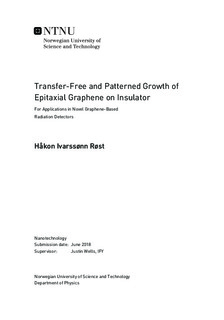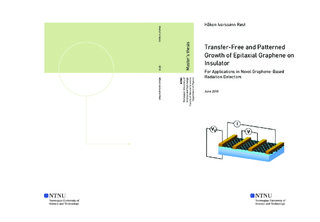| dc.description.abstract | A proposed radiation detector design utilizes graphene's strong conductivity response to small changes in electric field for sensing ionization products. The transport properties of graphene has shown great potential for the improvement of sensor technology by means of so-called proximity sensing, but its wide-scale application in commercial products has so far been limited by the inability to consistently reproduce high quality graphene on insulator.
In this project a hypothesized epitaxial growth mechanism for producing monolayer graphene on silicon dioxide was investigated. Graphene was grown epitaxially under ultrahigh vacuum conditions from 6H-SiC coated with a ruthenium catalyst layer. Several different thicknesses of graphene was attempted grown using different heat treatments and thicknesses of ruthenium. The growth process was characterized using X-ray photoelectron spectroscopy (XPS), X-ray absorbtion spectroscopy (XAS) and low-energy electron diffraction (LEED).
Using energy-resolved XPS, graphene was confirmed growing in thicknesses of 2-6 monolayers near the surface of the samples. Angle-resolved XAS revealed the orientation of the planes to be parallel to the basal plane of their underlying substrates. The XPS indicated that the growth was mediated by the ruthenium layers reacting with silicon from the carbide crystal at temperatures around 700 degrees Celsius, with significant graphitization occurring at 800 degrees Celsius. All samples were successfully patterned with ruthenium by evaporation through a shadow mask, and graphene was confirmed growing in the patterned regions only using spatially resolved XPS and XAS.
Decoupling of the graphene from the underlying silicides was achieved by a stepwise intercalation of silicon and oxygen, leading to the eventual formation of insulating silicon oxides between the graphene layers and the growth substrate. The presence of additional silicon oxide layers was confirmed to be in the patterned regions only using spatially resolved XPS.
Integration of the grown graphene on insulator heterostructure into the proposed radiation detector design has so far not been realized. Further mapping of the graphene band structure and testing of its transport properties is still needed to fully confirm the graphene quality, and its potential for applications in novel graphene-based electronic devices. | |

